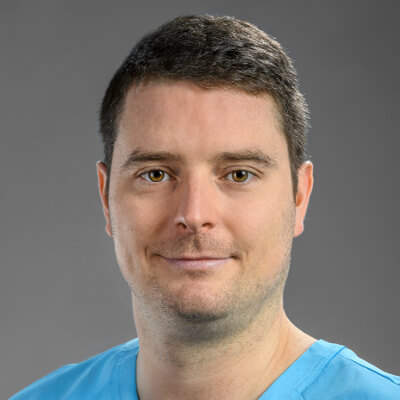Dental bridges
A bridge consists of at least two dental crowns put together in one prosthetic piece. The bridge will be permanently fixed to natural teeth (through cementation) with the purpose of restoring their shape, size and functions (masticatory, phonetic and aesthetic), but many more advantages can be gained when choosing this type of treatment. For example, a bridge can correct an non esthetic shape of a dental arch or even sometimes stabilize teeth with mobility due to gum disease.
When a lost tooth cannot be replaced by a dental implant, or the resulting space cannot be corrected with an orthodontic treatment, the bridge offers a good alternative, because the bridge body will cover the space between the remaining teeth and thus, replacing the missing ones.

Why might we need a dental bridge?
Whenever a tooth is lost, important changes develop along the arch. Neighbouring teeth begin to drift to the empty space, but more often than not, they tilt and get stuck in an unfavourable position that will make cleaning harder or impossible. In most cases the result is tooth decay or gum disease. Teeth in the opposite jaw might shift down or up into the space, bringing about even more complications to bite relations. All these changes can affect the jaw joints (TMJ) and place more stress on the remaining teeth.
Furthermore, after losing a tooth, the bone starts receding and, consequently, the normal shape of the arch will be disturbed. This is most obvious when more teeth are missing, because losing the support for soft tissues (like lips and cheeks) gives the entire face an older looking aspect.
Here are the main steps of this procedure:
Usually, we need two sessions, one to prepare the teeth and the other to fix the bridge.
- During the first visit, after a thorough examination, we will discuss the options with our patient. When a suitable type of dental bridge is chosen, we can prepare the teeth. At this point, the necessary repairs are made to ensure that the bridge rests on healthy and strong anchoring teeth.
- The teeth are prepared by removing their outer layer with dental burs. Everything will take place under local anaesthesia, so without feeling pain. In order to remove any anxiety related to medical interventions, our clinic also offers the possibility of analgosedation (also known as sleep dentistry) during the procedures.
- Once everything is ready, we will take the impressions of the arches. These are sent to the dental laboratory.
- Here comes the “medicine meets art” part of the work. Focusing on biological function and aesthetic demand, the dental technician will create a unique piece for each patient, which will fit comfortably and be in harmony with their smile.
- Until the dental bridge is ready, we will place a temporary bridge to protect the anchoring teeth. During this time, a sensitivity to heat and cold may occur. It is also advisable to avoid chewing gum and eating extremely hard or sticky foods.
- In the next appointment (1-2 weeks later, depending on the challenges of each case) the bridge is ready. Sometimes small adjustments are needed to the interdental or bite contacts. When everything fits perfectly and the patient is satisfied with the result, the bridge can be permanently fixed (through cementation).
When aesthetic requirements are higher (for example when dealing with frontal teeth) or when we have treatment plans that include smile correction or covering the dental arches in their entirety, we may need one or two intermediate “try-in” sessions.
These sessions have the purpose of checking all the details together with our patient (shape, colour, bite, phonetics), while any necessary modifications are transmitted to the dental laboratory.

Implant supported bridges
In order to support a bridge, we will need two or more dental implants. The steps for this procedure are the same, except for those that entail preparing the anchoring teeth. These are no longer necessary, as the bridge will be equipped with dental abutments that mimic prepared teeth. Whether the bridge will be screw-retained or cemented, remains to be decided in each particular case.
What type of materials are used when manufacturing a dental bridge?
Different materials can be used when manufacturing a dental bridge (just like manufacturing dental crowns), so before we choose a certain type for our patient, we will discuss all the options together. We will recommend one type over another depending on many factors, most notably being the position of the anchoring teeth or support implants, but the patient’s preference will also play a key role.
The location of the pillars of our future prosthetic work will influence our decision mainly because the force of the bite varies with their position on the arch, but also the aesthetic challenges we face are different, especially when covering the frontal teeth.
Therefore, our patients will be able to choose between the following options:
- Ceramic bridge on metal support (metal-ceramic bridge)
- Ceramic bridge on zirconia support (zirconia bridge).
Caring for your dental bridge
A dental bridge must be properly used, but also thoroughly cleaned and cared for to ensure its longevity. If oral hygiene is not ensured, the teeth covered by the bridge may still develop cavities and the surrounding gums may still be affected by periodontal disease or inflammation.
To prevent tooth decay or gum disease, we recommend the following:
- Brush your teeth at least twice a day (morning and evening) and clean between your teeth with dental floss and / or a waterpik every day.
- Bacteria that accumulate under the bridge body, must be removed through daily hygiene (with superfloss or a waterpik), to avoid bad breath and unpleasant taste, but also to prevent gum inflammation.
- Use only the oral care products recommended by our doctors to ensure that they meet the appropriate safety and efficacy standards for your particular case.
- As with natural teeth, it is advisable to avoid extremely hard foods, chew ice or other hard objects, such as pencils or fruit kernels.
- Be sure to visit our clinic for regular check-ups and professional teeth cleanings.
DIAGNOSIS
PROPHILAXYS
DENTAL ESTHETICS
DENTAL PROSTHETICS
DENTAL SURGERY
PERIODONTOLOGY
For any questions or making an appointment, please get in touch
If you need an appointment please contact us.
Get to know us

Dr. Molnár Lehel Ferenc
Dentist & specialist in oral surgery

Dr. Alexandra Cristina Rus
Dentist

Dr. Molnár Szabolcs Mihály
Dentist

Dr. Huber Gergely
Orthodontist
Contact
If you have any questions or would like to make an appointment, do not hesitate to contact us!
Molnar Dental
Várkerület 43
H-9400 Sopron
Ungaria
Telefon
+43 (676) 699 77 35
+36 (30) 146 9080
info@molnardental.com
OPENING HOURS
| Mo: | 8:30-18:30 |
| Tu: | 8:30-18:30 |
| We: | 8:30-18:30 |
| Th: | 8:30-18:30 |
| Fr: | 8:30-18:30 |
| Sa: | 8:30-18:30 |
| Su: | closed |
Visit by prior appointment.
CONTACT
Address: Várkerület 43
9400 Sopron, Hungary
+43 (676) 699 77 35
+36 (30) 146 9080

